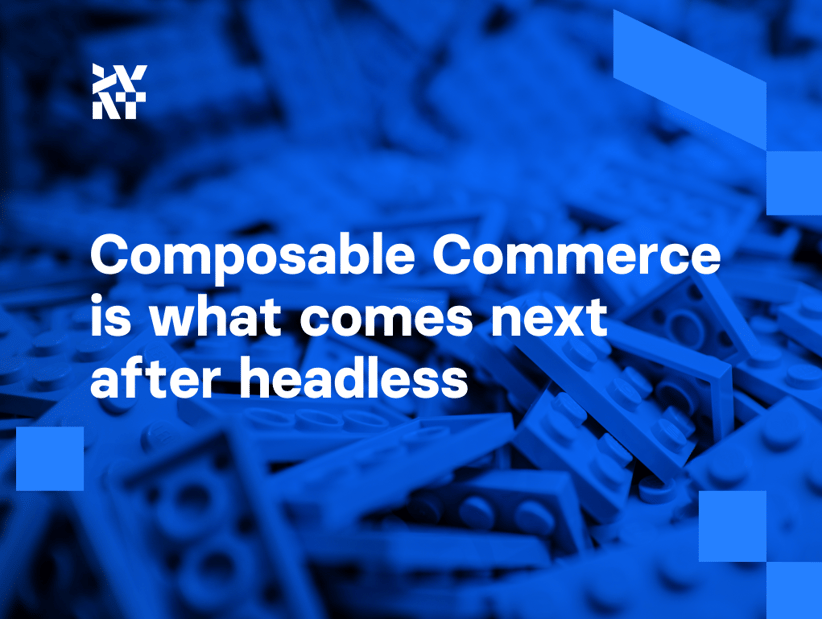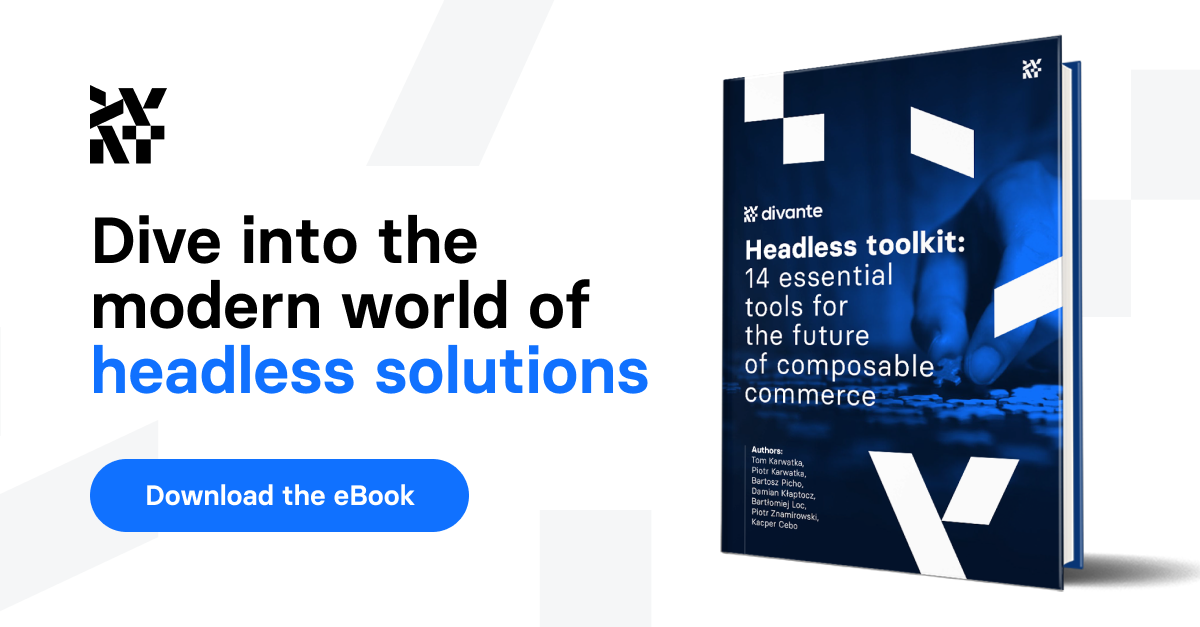One of our four key values at Divante is Next: “We don’t believe in novelty, we seek and utilize technologies that will shape the future”. In our domain, Composable Commerce is almost certainly what comes next.
The dramatic market shifts we saw this year have made us all realize that the flexibility and speed of implementing enterprise software are more crucial than ever. The so-called headless approach is helping companies to innovate faster by separating backend from the frontend. It’s a genuine game-changer in software development and it leads the way to Composable Commerce.
In the last couple of years, we have seen the growing popularity of Microservices, API-first, Cloud, and Headless. This year, commercetools started to promote the MACH Alliance (of which Vue Storefront is a member); its aim is to educate corporate clients about the benefits of using software which is Microservices-based, API-first, Cloud-native SaaS, and Headless.
We can use these MACH technologies to build with a more business-minded approach. MACH is something like a set of digital Lego blocks, where every block could be a separate business feature.
It also lets us look even further, beyond headless builds, to see what comes next. Composable Commerce connects all the dots and allows us to imagine a whole new way of building eCommerce Systems.
Read more articles about other technologies that are coming Next:
- No-code eCommerce platforms
- Building JAMStack and cloud-native commerce
What is Composable Commerce?
Composable Commerce is a commerce system built from Packaged Business Capabilities (PBCs). Each PBC is a software component that represents a well-defined business capability.
This way, Composable Commerce offers every business a selection of best-of-breed commerce components that are all connected—or composed—into a custom application built for specific business needs.
Each Packaged Business Capabilities (PBCs) is a feature or capability of the application and is typically a third-party software component. A good example of PBC is a checkout or a search engine. The composable approach utilizes a whole palette of various vendors who offer dedicated solutions for specific business needs.
By 2023, organizations that have adopted a composable approach will outpace the competition by 80% in the speed of new feature implementation.
Gartner
 Packaged Business Capabilities
Packaged Business Capabilities
Each PBC can be deployed independently which means you completely eliminate the risk of choosing the wrong component. Every component of your eCommerce System could be easily removed or changed with another one. This allows you to experiment with more vendors.
What are the differences between Microservices and PBCs?
Microservices are a relatively low-level and technical approach to building applications from independent components. PBCs are usually a whole set of microservices connected together to deliver a business value.
The ecosystem of Composable Commerce vendors
One of the biggest benefits of using Composable Commerce is the freedom of choosing the best vendor for every business aspect of your operations. This is why it’s important to be aware of what components are on the market already.
Composable Commerce is here already
We see a growing number of vendors of PBCs on the market. It’s already possible to buy or rent capabilities from dedicated vendors to address functions like:
- Product catalog
- Shopping cart
- Checkout
- Promotions
- Loyalty
- Reviews and ratings
- Search
- Product recommendation
- Content management
- ID management
- Analytics
- Frontend
The list is getting bigger and bigger as the whole Composable Commerce concept is fueling a lot of new startups. In the future, integration among PBCs should be even easier, using a no-code or low-code approach.
How to start with Composable Commerce?
With its recent publication on Composable Commerce, Gartner is giving clear recommendations for companies to move from monolithic architecture to a more flexible one.
Gartner Recommendations:
- Create a roadmap to strangle your digital commerce monolith by adopting an incremental, modular approach using packaged business capabilities.
- Secure the future of your digital commerce strategy by developing a composable commerce platform.
- Maintain business agility and control by selecting delivery options that retain business user control of presentation.
It’s a good idea to focus on capabilities impacting customer experiences such as search, personalization, new touchpoints, and mobile UX. This is where you can find quick wins and gather momentum.
At Divante, we are always looking for what comes next. Talk to us about Composable Commerce or about headless commerce solutions.
Published November 9, 2020












